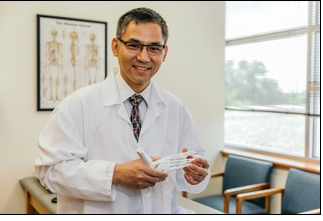Achilles Tendonitis: Causes, Symptoms, and the Best Treatment Approaches By Dr. Phinit Phisitkul
Achilles Tendonitis: Causes, Symptoms, and the Best Treatment Approaches By Dr. Phinit Phisitkul
Blog Article
Achilles tendonitis is a common disease that is a problem with the Achilles tendon that connects the calf muscles to the heel bone. For Dr. Phinit Phisitkul , understanding the causes, recognizing the symptoms and looking for effective treatments are crucial to managing and regaining from Achilles tendonitis.

Causes of Achilles Tendonitis
Activities that put a lot of stress on the Achilles tendon, such as running, jumping or sudden changes in direction, could result in tendonitis. This is particularly prevalent among athletes and people with a sudden increase in intensity and frequency of their exercise routines.
Shoes that do not provide adequate support or cushioning can contribute to the formation in Achilles tendonitis. Shoes that do not fit properly or provide insufficient shock absorption could put additional strain on the tendon.
Anomalies in foot mechanics, such as low arches or flat feet could affect the way that the Achilles tendon performs and increase the chance of developing tendonitis. Poor alignment or movement patterns could also contribute to the condition.
Symptoms of Achilles Tendonitis
Pain is often felt along the back of the heel or inside the tendon itself. It's usually caused by physical exercise or following periods of rest. The pain can begin as a mild ache and slowly increase in severity.
The Achilles tendon is a source of inflammation. It may cause swelling around the heel area or tendon. This swelling may be accompanied by heat or swelling or redness. In addition, stiffness of the tendon could restrict the range of motion as well as make moving the feet difficult.
Best Treatment Approaches for Achilles Tendonitis
In the beginning, resting the foot and applying ice may help to reduce pain and inflammation. Avoiding activities that exacerbate the symptoms is essential for healing. Ibuprofen, a prescription drug available over the counter, can help manage pain and reduce swelling.
Physical therapists can offer exercises to strengthen the muscles of the calf and increase flexibility of the Achilles tendon. The stretching and strengthening exercises assist in relieving symptoms and avoid injury in the future.

Also, wearing supportive shoes that have cushioning orthotic inserts can reduce strain and promote healing. Finally, in the event that traditional treatments are not able to offer relief, medical procedures like corticosteroid injections, or surgery could be considered.For more details make sure you click on this link Dr. Phinit Phisitkul Dakota Dunes, SD. Report this page